4x4 Ski Trucks and Snow Rigs
Skiers and snowboarders are unique in that they love powder dumps from a winter storm. Snow storm conditions may keep most people off the road but will draw advanced skiers to the mountains for first tracks sometimes requiring them to drive in less than optimal (actually terrible) conditions. The vehicles designed for these winter conditions have four (all) wheel drive, aggressive tread patterns (off road or snow tires) and accessories to help in emergency conditions (eg. chains, shovel, ...) and often roof or hitch racks to supplement the vehicle's storage capacity.
The best ski vehicles are not necessarily the most pragmatic for daily commuting. A daily commuter typically takes a single driver and little else. A ski vehicle typically takes as many as will fit plus all of the gear. The daily commuter vehicle for most is on the road only when driving conditions are safe and optimal or the trip is delayed till it is. The powder hound is not bound by the same logic or premise.
Here is a sampling of some ski vehicles:
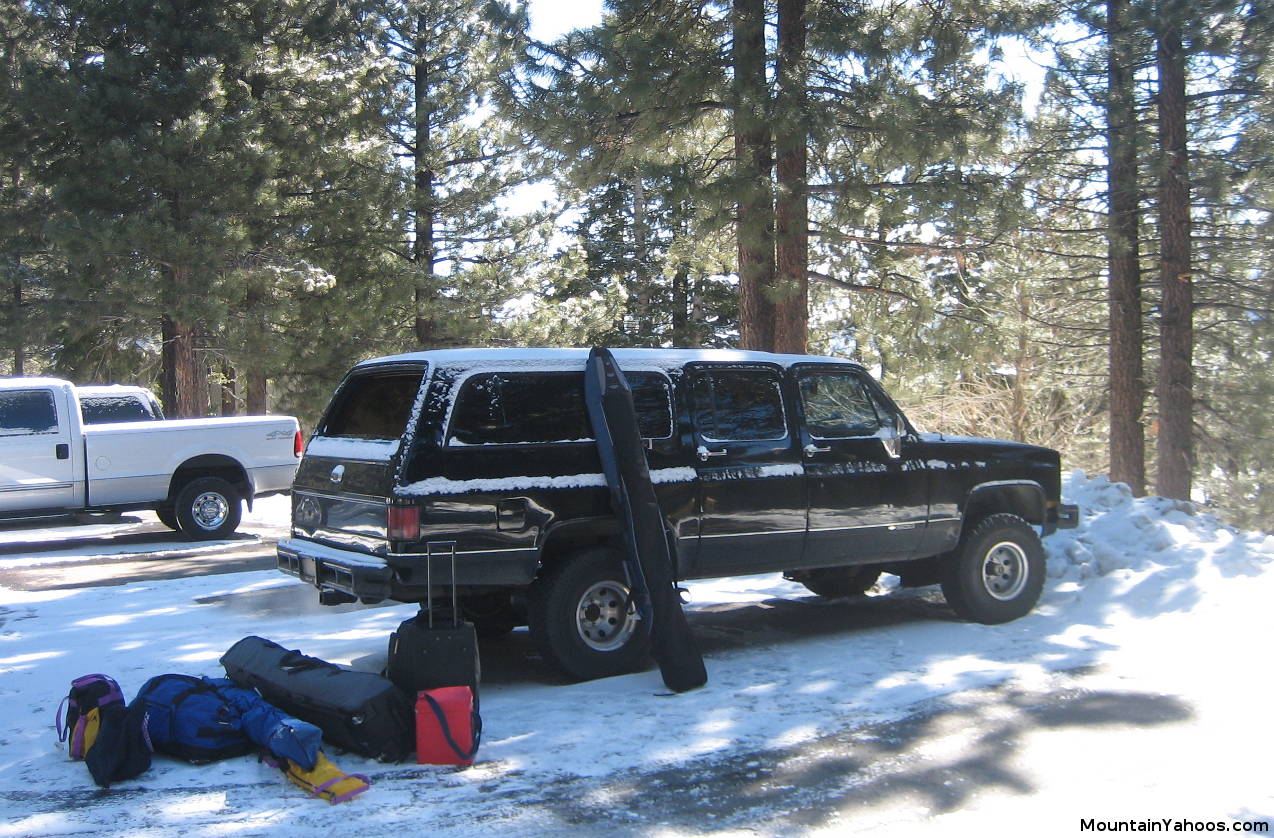
A 1989 Chevy Suburban 4x4 with the following mountain features:
|
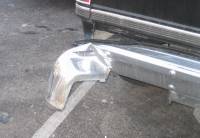
This is why tubular steel bumpers are superior to the stock stamped bumper. |
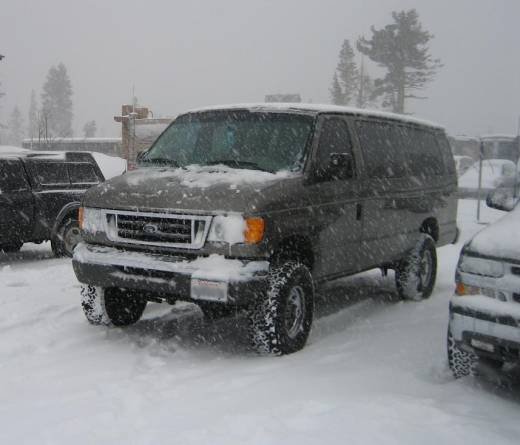
Ford 4x4 conversion van (conversion to add 4x4 capability to a van). Lots of space for people and gear.
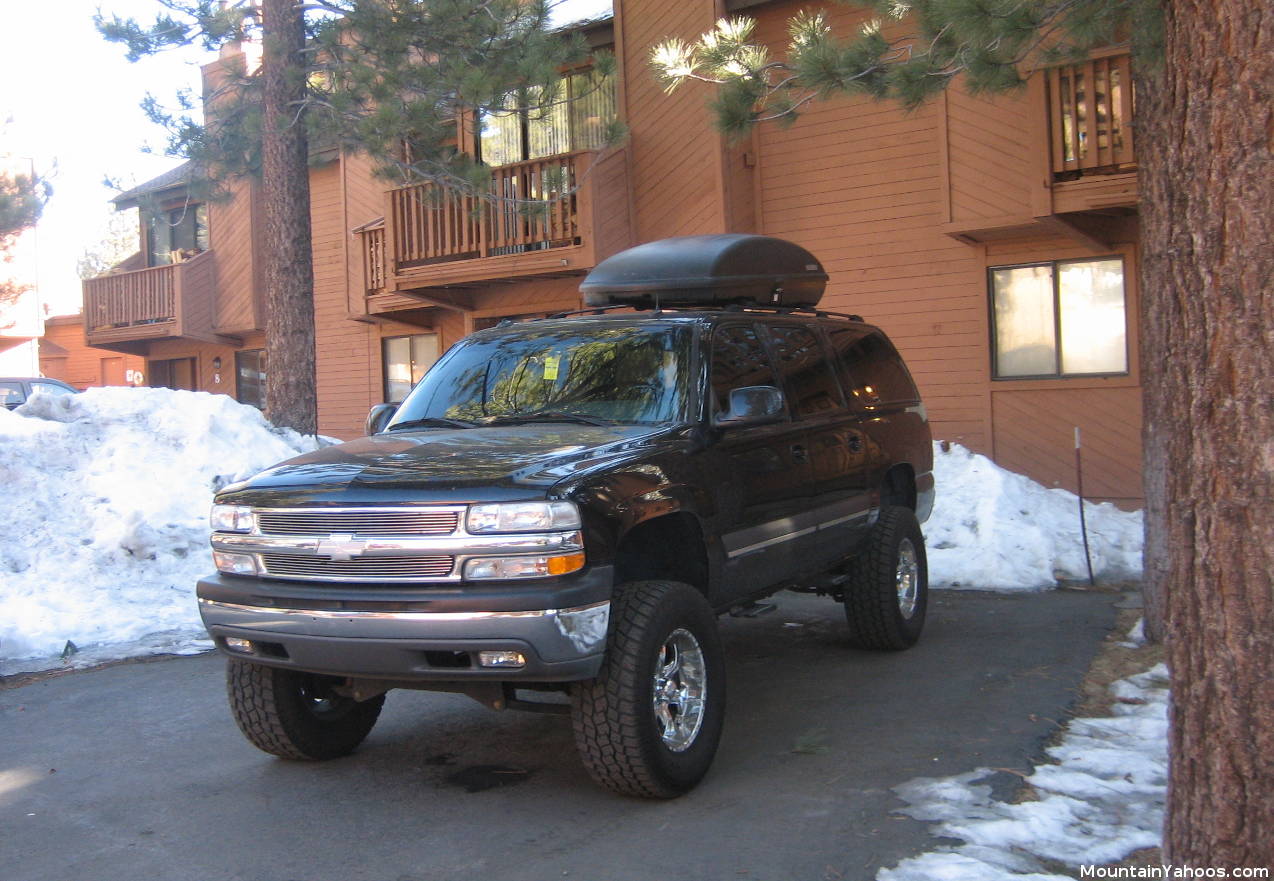
Chevy Tahoe 4x4 (you will see lots of these in the parking lot).
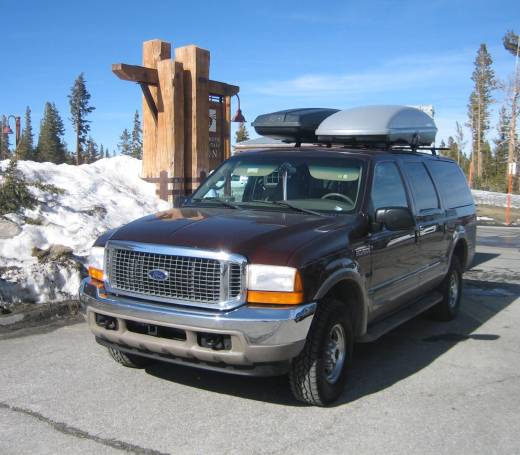
Ford Excursion 4x4. While not optimal for carrying a single commuter to work, it must be remembered that it was optimized for hauling lots of skiers, boarders and gear. The roof cargo carriers are great for boards and other gear.
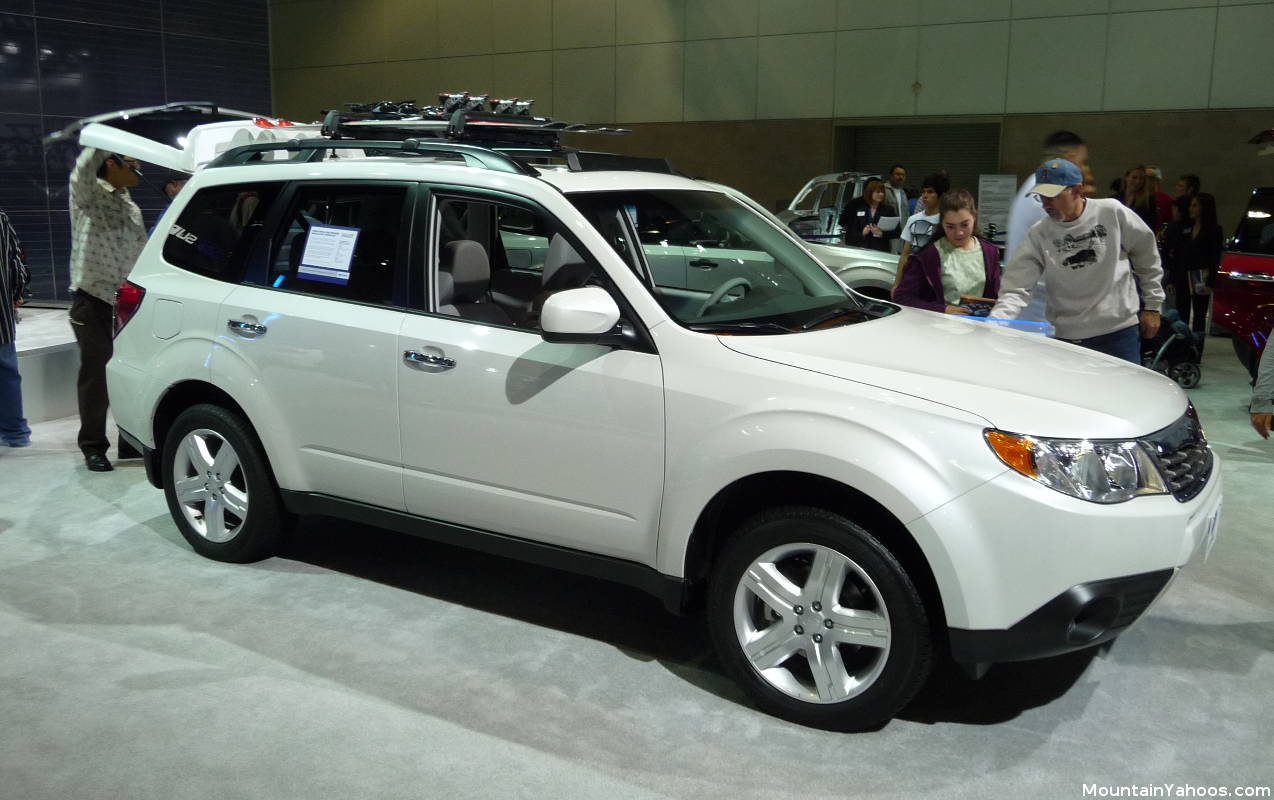
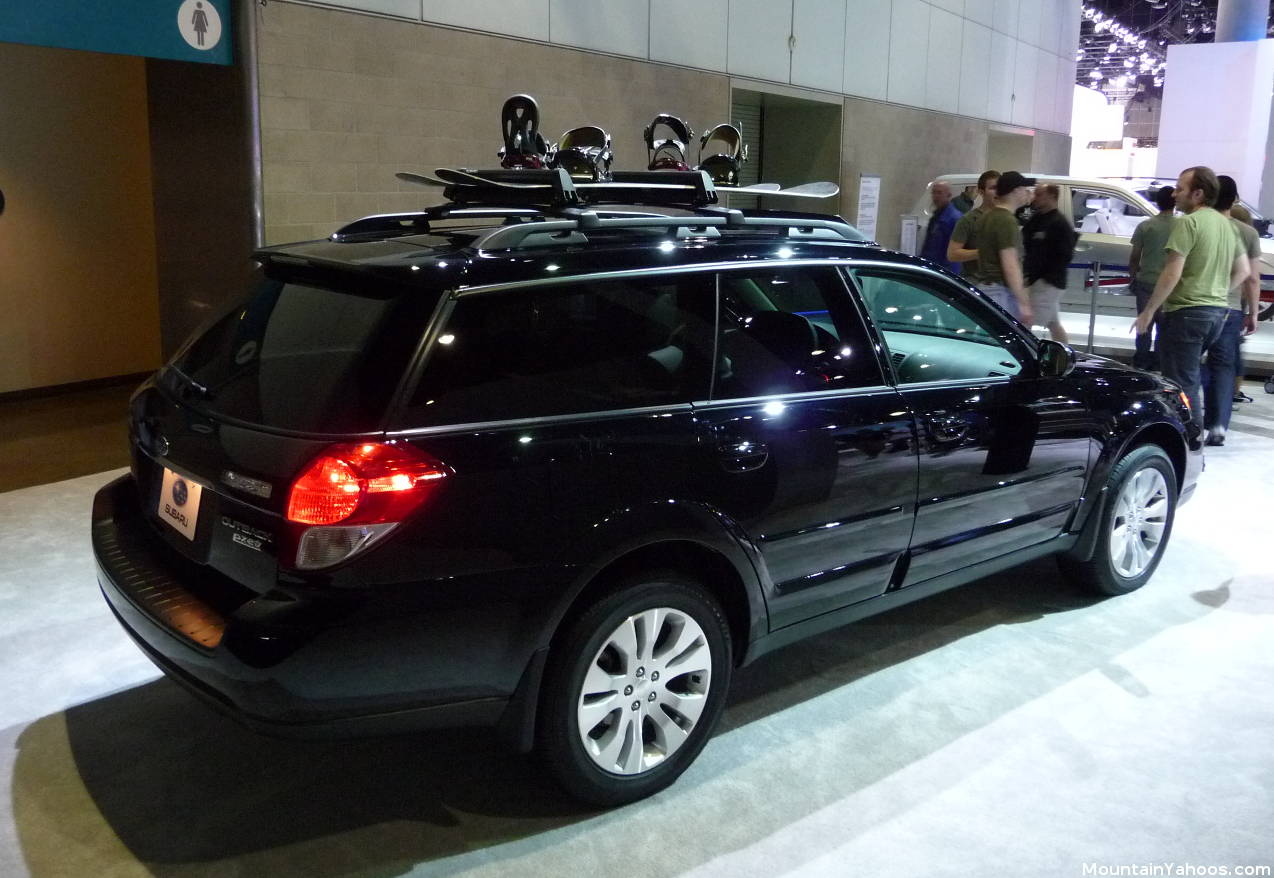
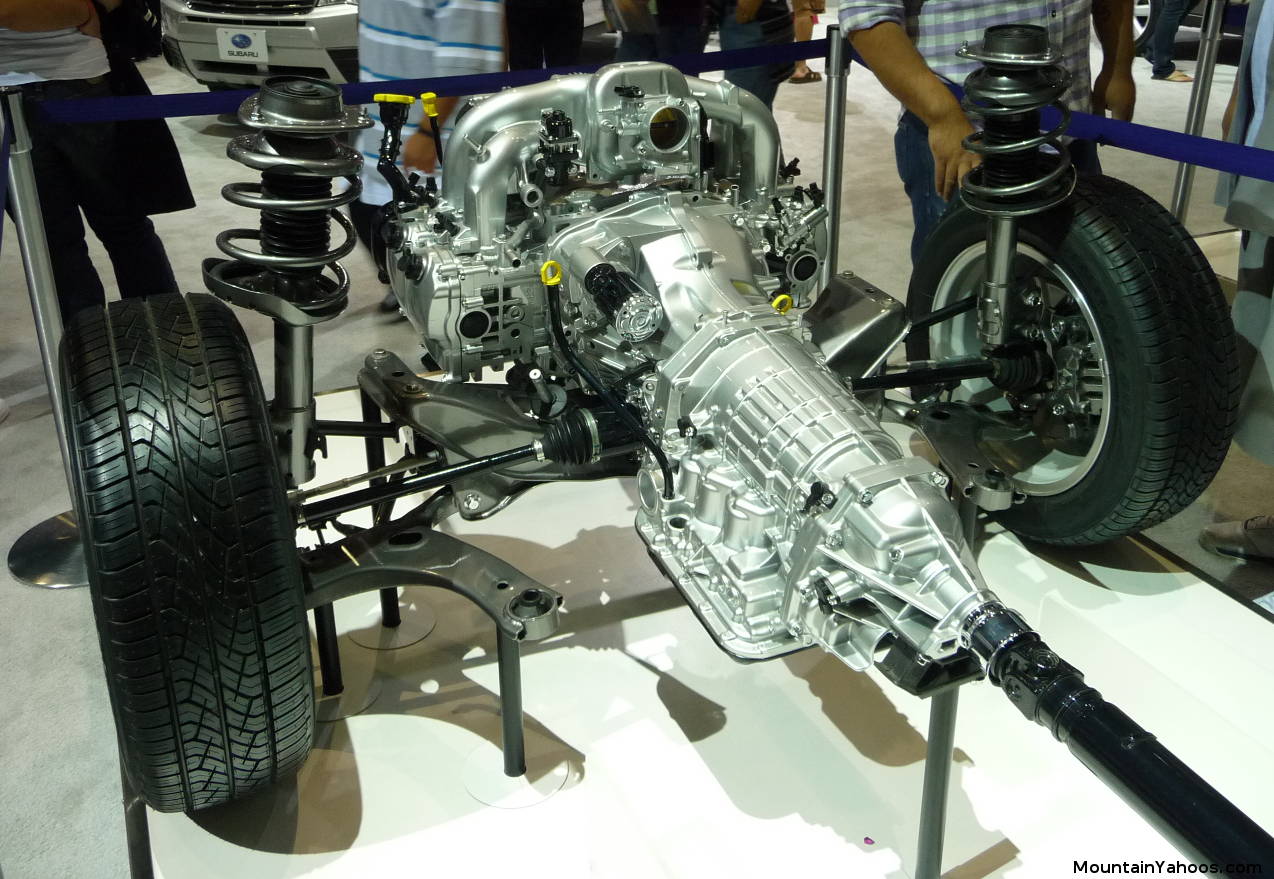
Subaru "all wheel drive". More economical than its big brethren.
4x4 Buses:
From going to school, getting around town or just getting around the resort parking lots, 4x4 buses play an important piece of the ski country transportation puzzle.
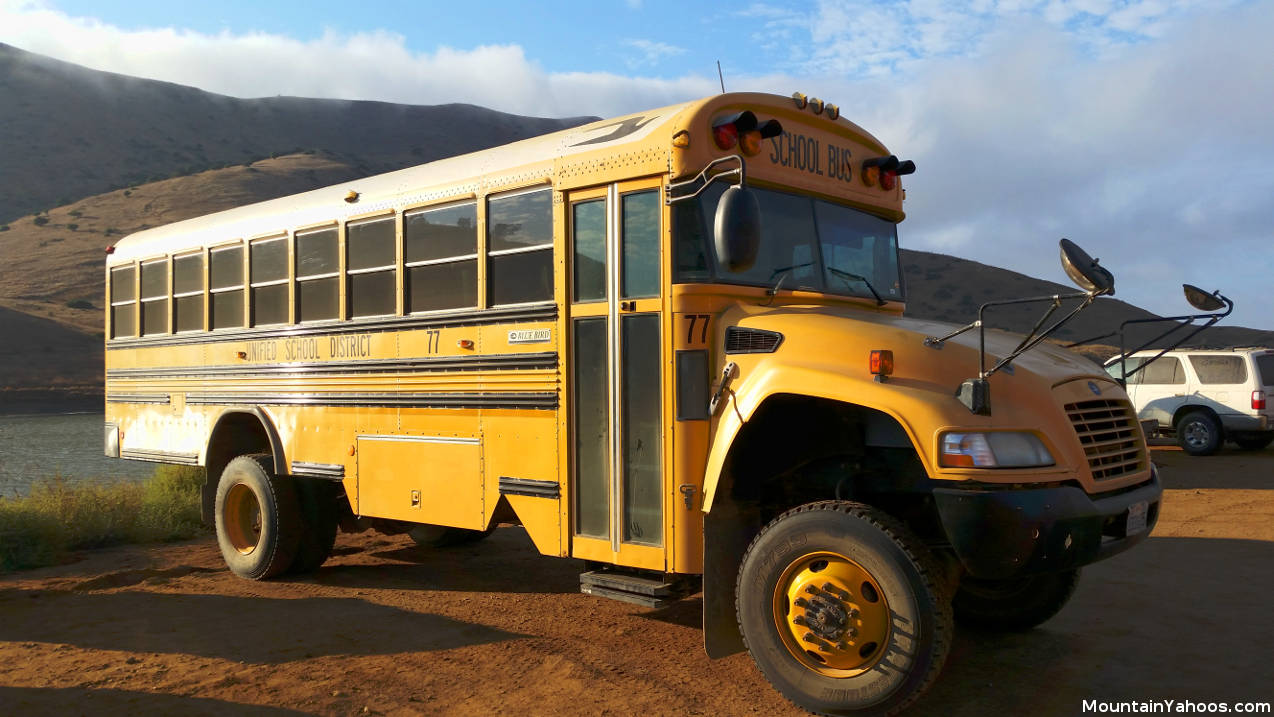
4x4 Conversions:
- RLS: Four Wheel Drive bus conversions - 4x4 School Buses
- Advanced 4wd systems - Ford and Chevy van and truck conversions
- Boulder Off Road Vans
- Northwest Quad Van: 4x4 Ford conversion vans
- Overland Vans
- Production Off Road - truck, vans and monster trucks: conversions and mods
- QuadVan - vans and busses
- Quigley Motor Company - 4x4 conversion vans.
- Tulsa Truck Mfg - 4x4 and 6x6 truck and bus conversions
- SportMobile - Ford and Chevy conversions
- Sportsman 4x4 - Canada - 4x4 van conversion
- U-joint Offroad - Van conversions
- Bus4x4 - Austrlian bus conversion
- Enduro - Toyota bus conversion (Australia)
- Folding shovel
- Tire chains or cables
- Jumper cables
- Tow strap or chain
- Lug wrench
- Tire repair/plug kit
- Tire air compressor or foot pump
- Flashlights
- Toolbox
Four wheel drive vehicles are often allowed to proceed without chains but they are not exempt from the laws of physics. Remember that four wheel drive does not give you any advantage while trying to stop on ice. Always carry chains in your mountain vehicle at all times.
Whatever chain or cable system is used, they must be matched to your tire size. Always test fit a new set of chains.
The chains are attached to your drive wheel. That is on a rear wheel drive automobile, attach the chains to the rear wheels. On front-wheel-drive vehicles mount the chains to the front wheels. On four wheel drive vehicles (especially those with oversize tires), it is typical to attach the chains to the rear wheels. Oversize tires will often come very close to the front fenders on a 4x4. This is sure to cause problems with chains mounted to the front wheels.
In addition to packing the snow chains, don't forget to bring a pair of work gloves and a waterproof kneeling mat to use while fitting the chains.
Manufacturers:
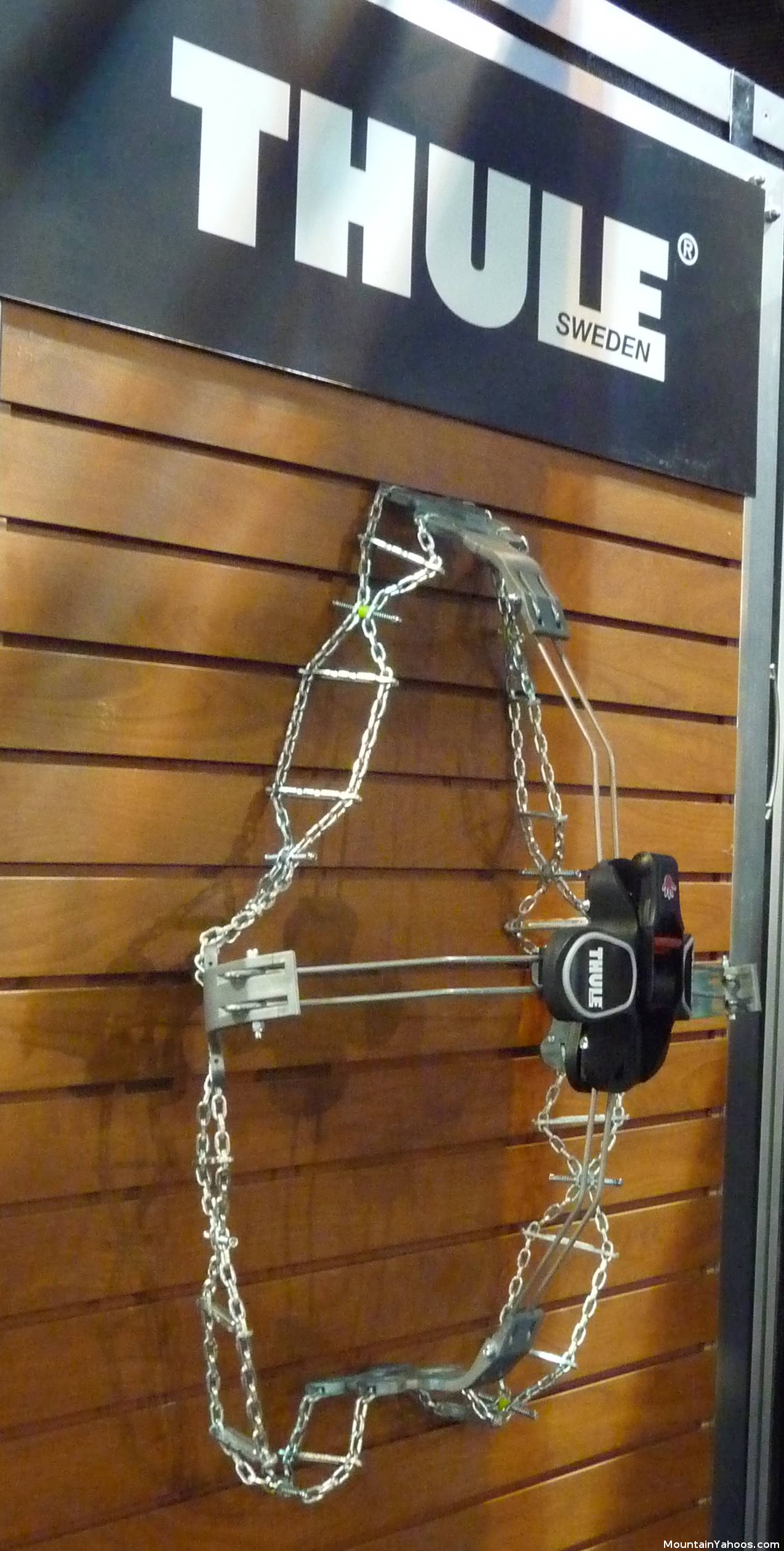
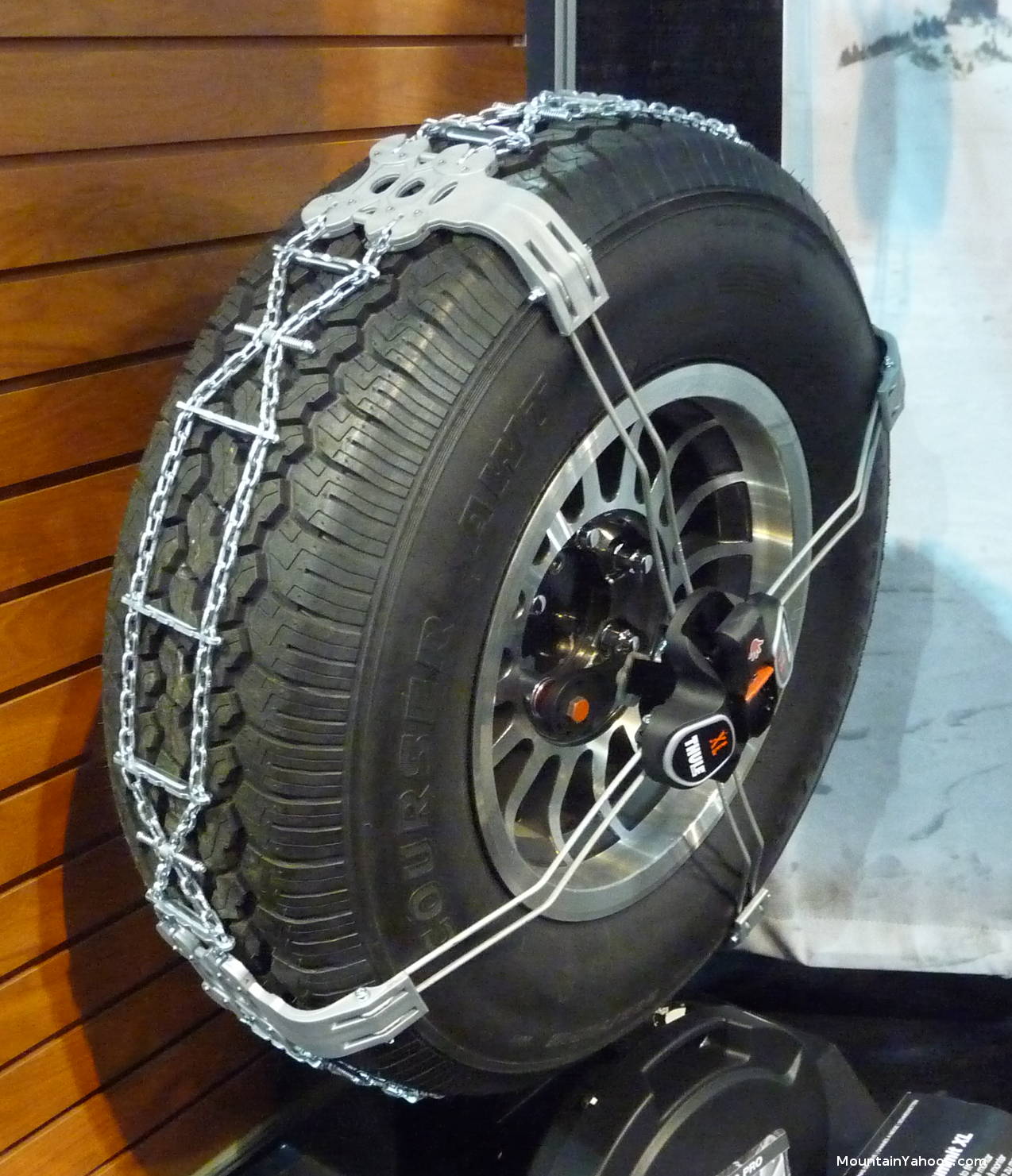
Manufacturers:
- Rhino Rack
- SportRack
- Thule
- Yakima
- CFR: Cheeta Factory Racing - ski and snowboard racks for snowmobiles
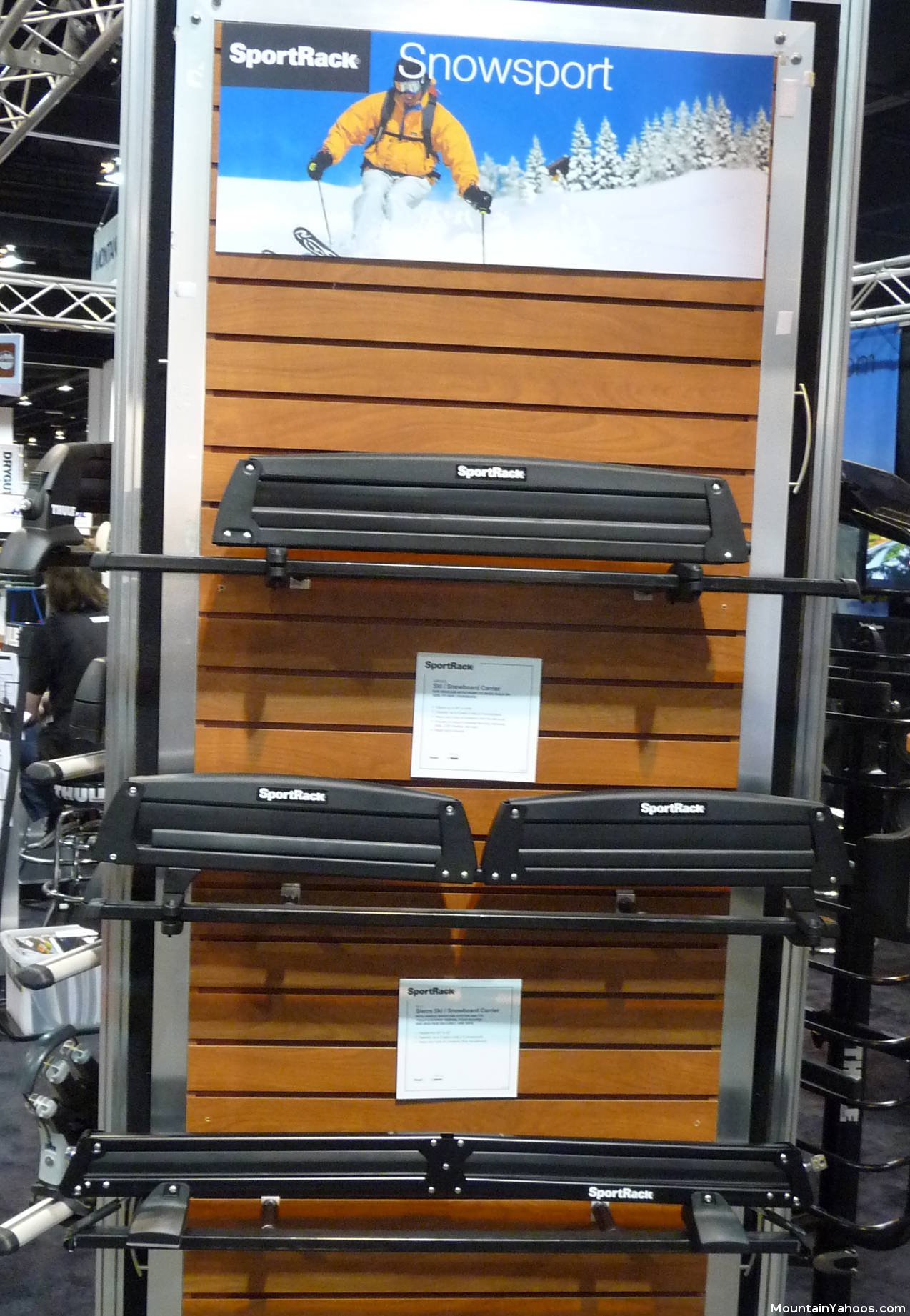
SportRack
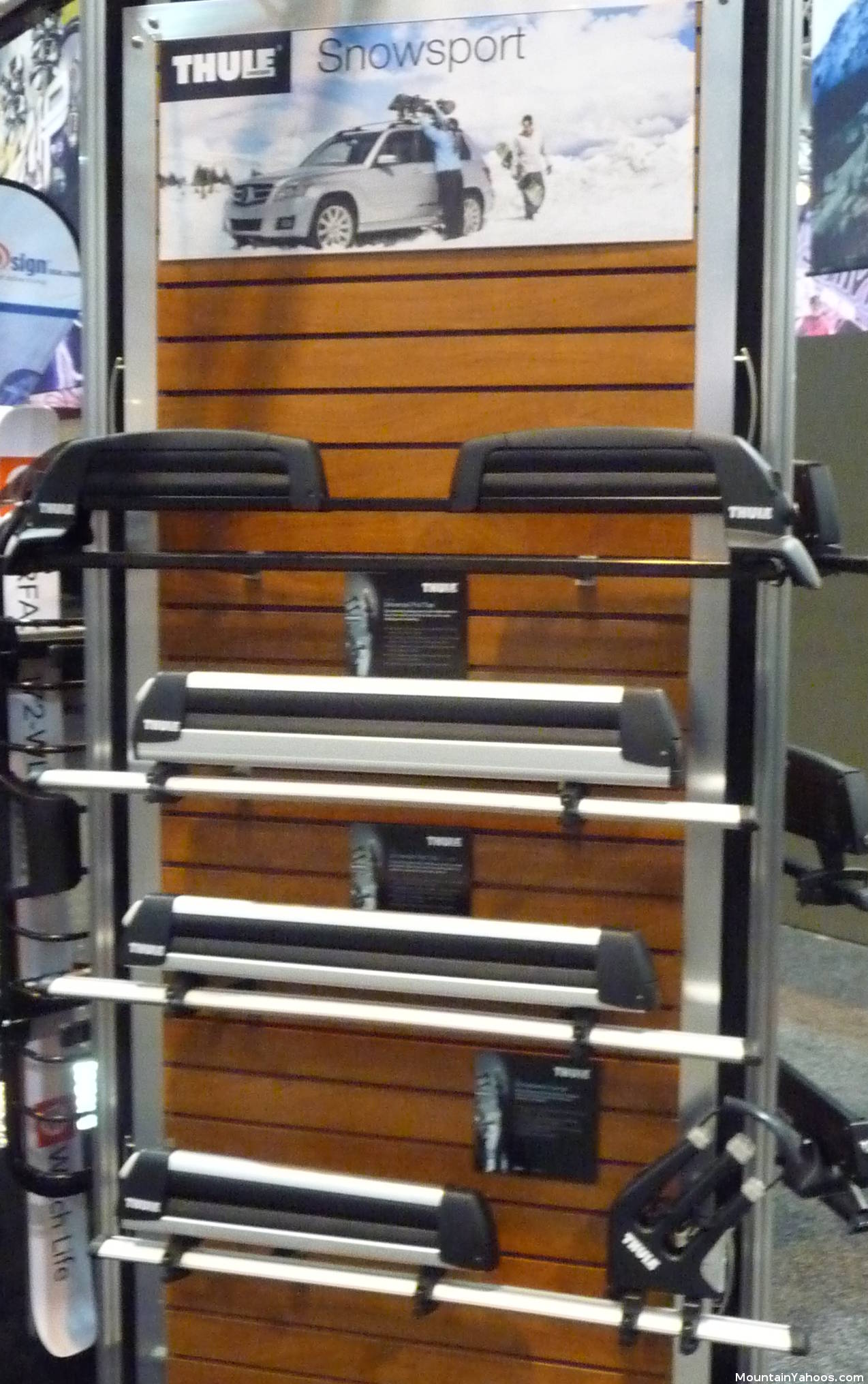
Thule (of Sweden): Ski racks
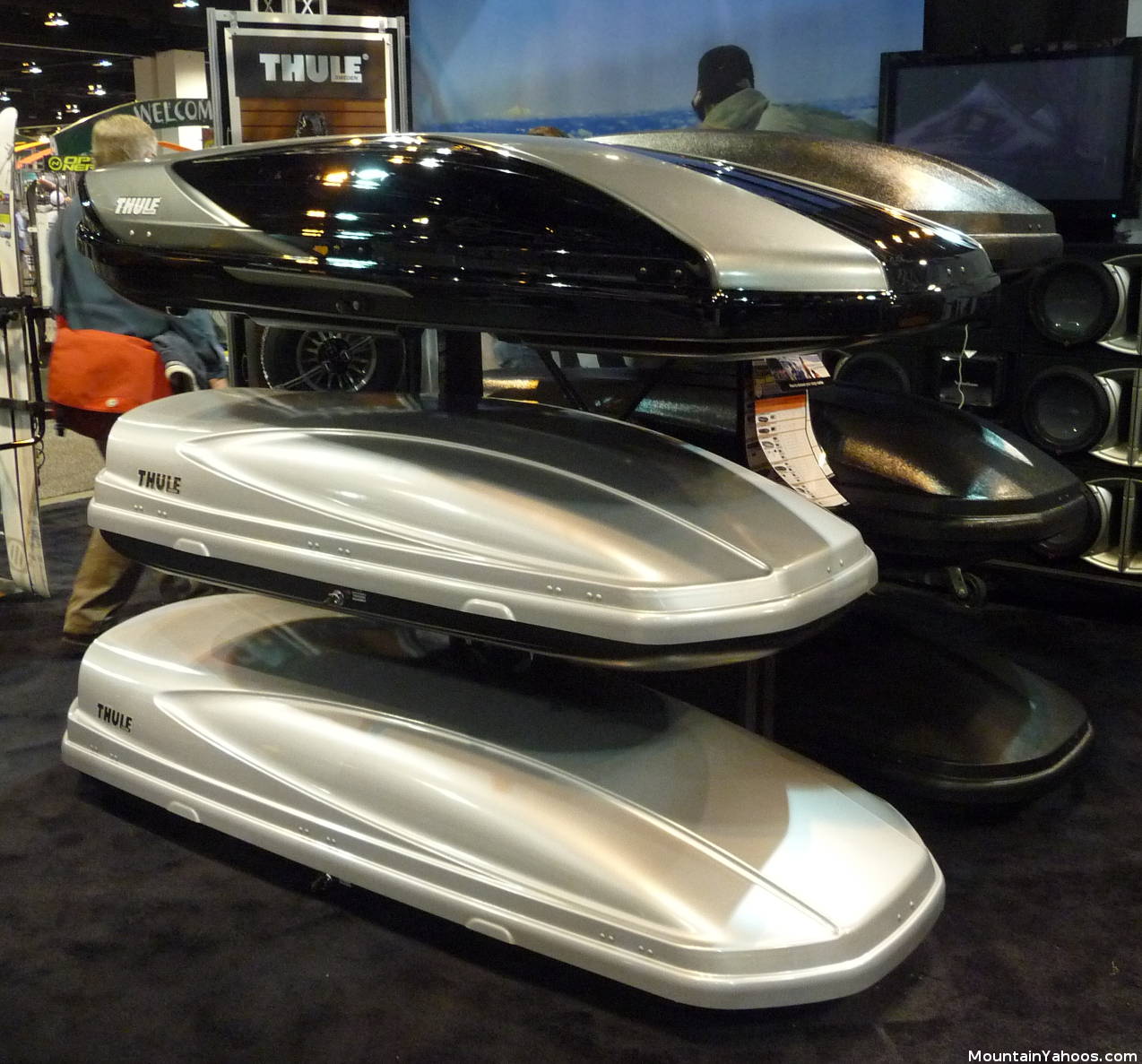
Thule roof-top cargo carriers
Rhino Rack rooftop carriers.
- When stuck, use your floor mats as traction by placing them in the front of your driving wheels (rear tires for rear wheel drive, front tires for front wheel drive cars and all for 4x4s).
- If the summer tires on your rental car do not have enough traction to get you up the hill, try lowering the air pressure to about 12-14 lbs/in^2. This will improve the footprint on the snow. The tires must be returned to operating pressure as soon as possible. Tires with low air pressure can become unseated from the rim in corners, provide less stability (lateral wobble) and are not safe except at the lowest of speeds.



